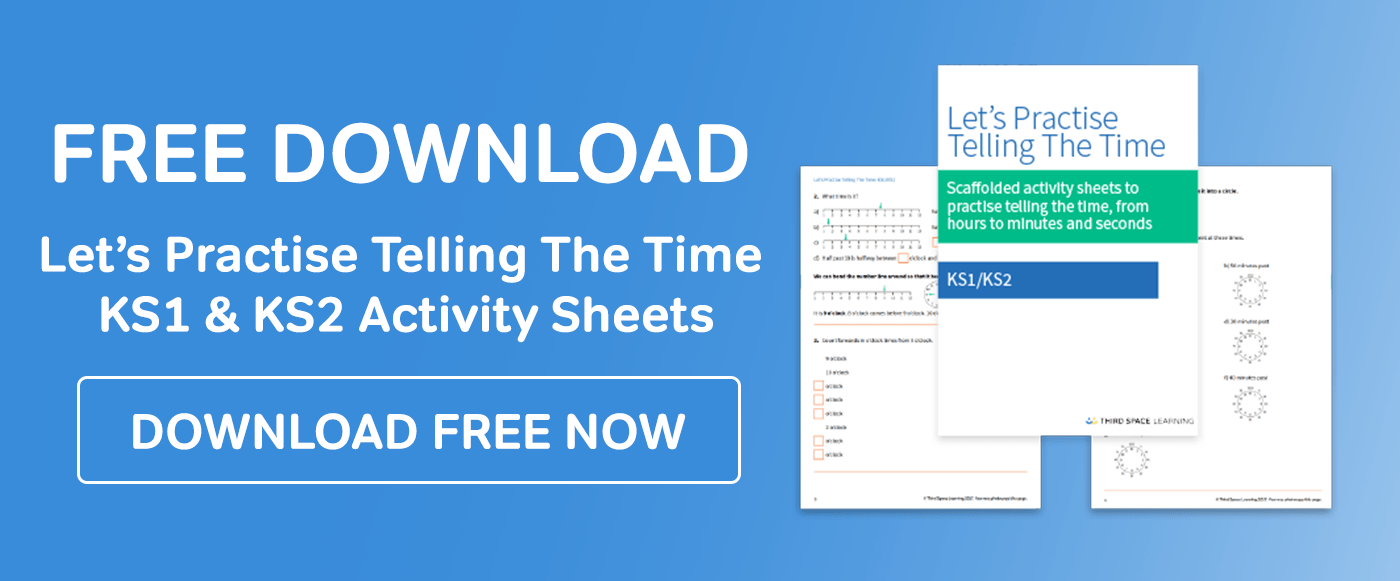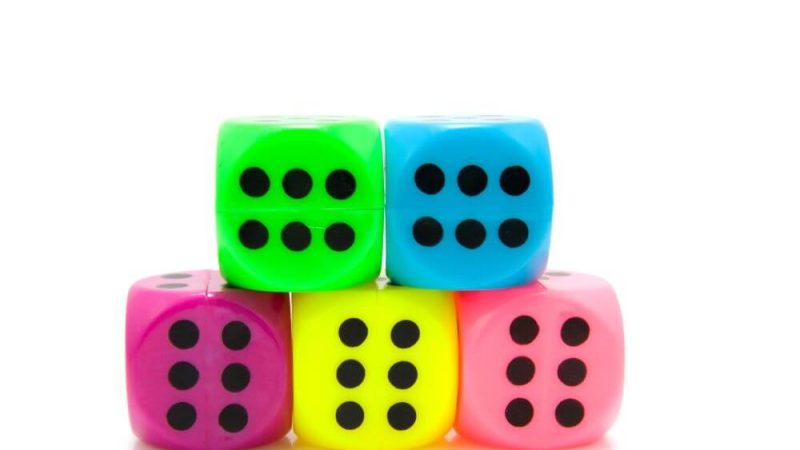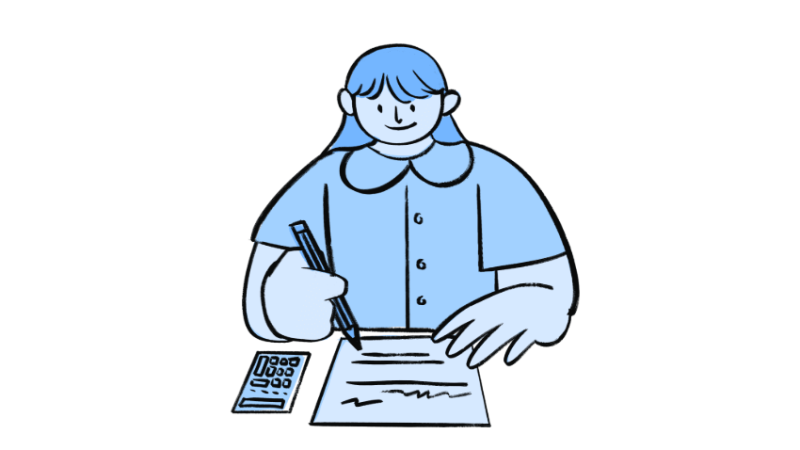Best telling the time worksheets and games for KS1 Maths

Help primary children learn to tell the time quickly and efficiently with these excellent resources, activities, ideas and more…

- by Teachwire
- Classroom expertise and free resources for teachers
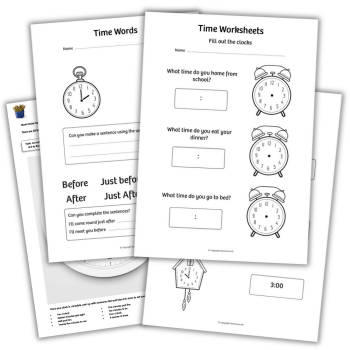
Free telling time worksheets
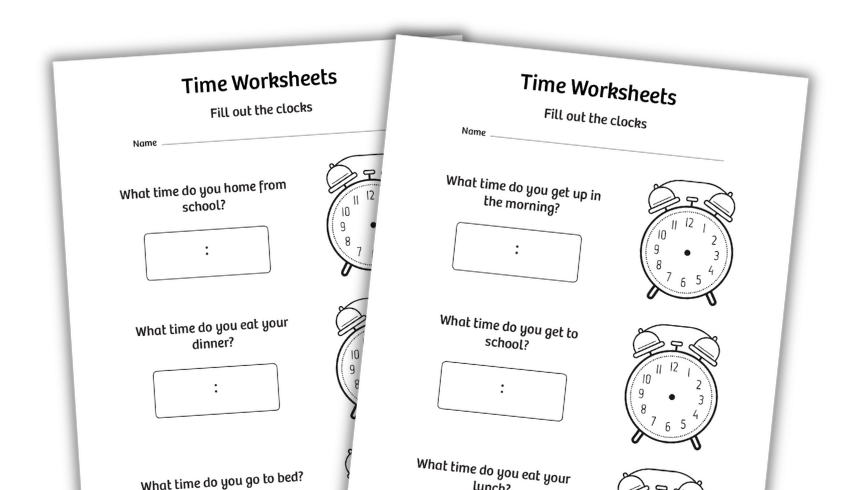
We’ve designed these free telling time worksheets specifically for KS1. These free printable PDFS will enhance the time-telling skills of your young learners while making the process enjoyable and interactive.
KS1 time lesson plan
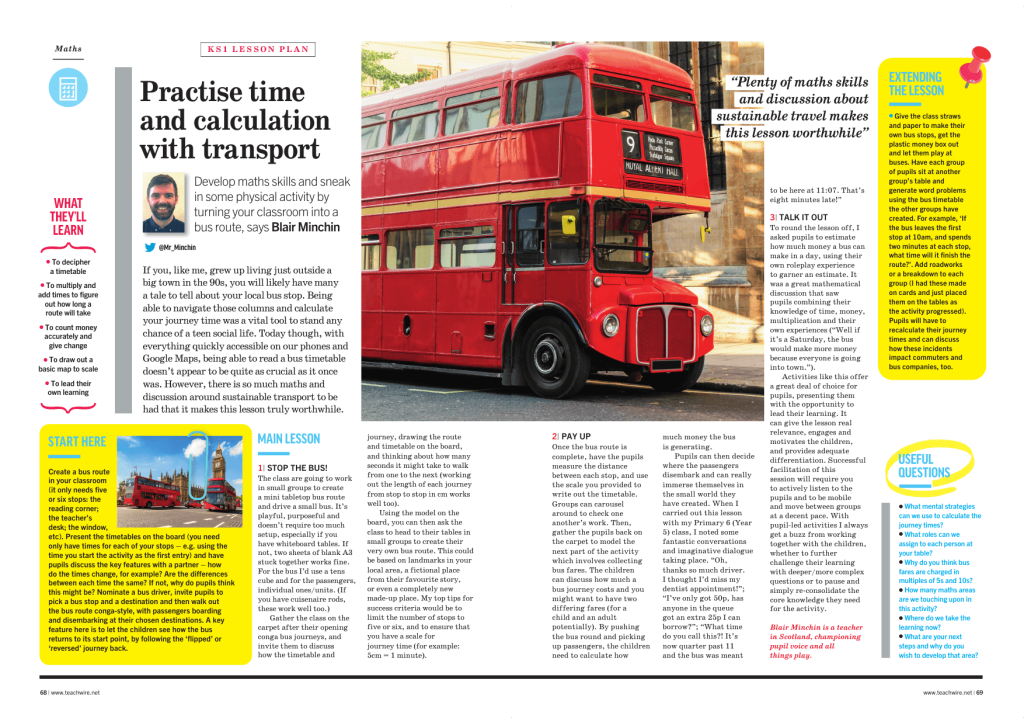
Develop maths skills and sneak in some physical activity by turning your classroom into a bus route with this fun KS1 time lesson from Blair Minchin.
The following six resources follow the White Rose Maths scheme of work, where ‘time’ falls at the end of the summer term. These resources cover all six of the small steps required to cover the topic in full.
Before and after
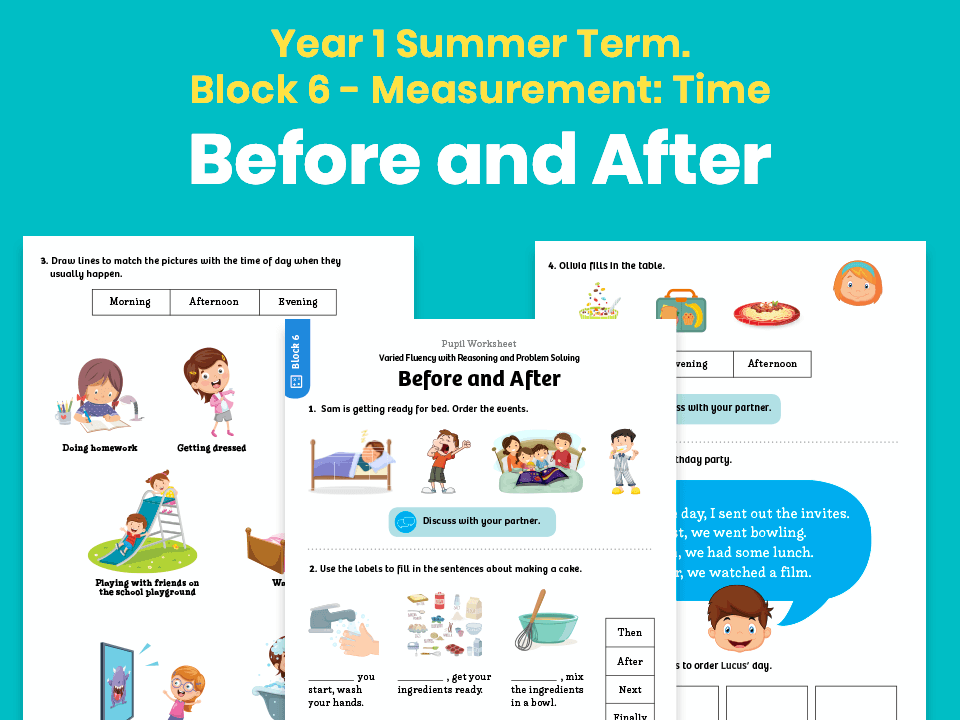
This first step helps children to use language associated with time to describe a sequence of events, for example: before and after, next, first, today, yesterday, tomorrow, morning, afternoon and evening.
They’re tasked with ordering pictures chronologically of a boy’s day, adding words to a sequence of instructions and thinking about things that happen in the morning, afternoon and evening.
Dates
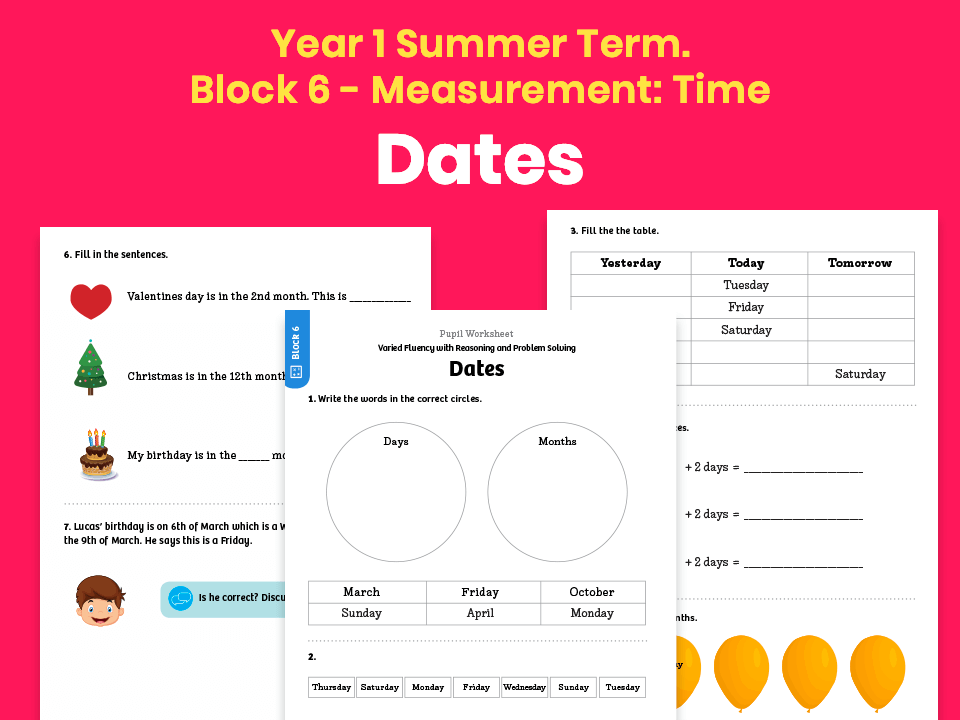
The next step is helping children recognise the chronology of dates. They may know the days of the week in order, but do they know what’s three days from now, or what day it was two days ago?
This worksheet will help them get a grip on days, weeks, months and years, with a selection of pictorial questions that progress in difficulty from separating days and months to working out what day a date will fall on.
Time to the hour
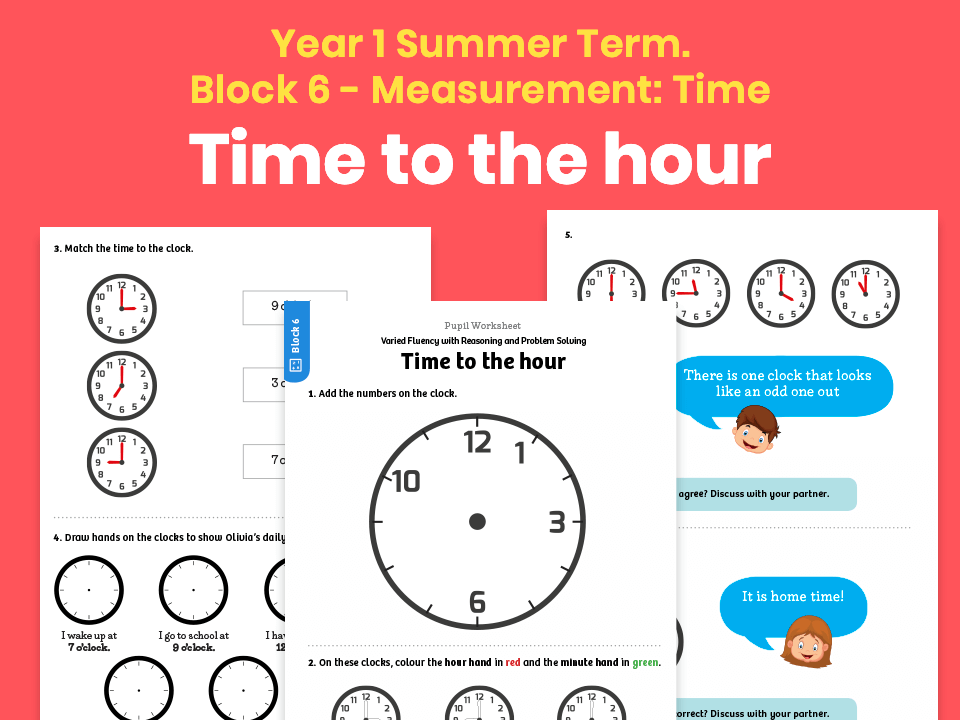
Next, we’re moving on to the good old-fashioned analogue clock. This worksheet just looks at telling the time to the hour as a nice gentle introduction to children growing up probably more used to digital clocks.
First they need to add numbers to a clockface where they’re only given five of the 12, then they’re tasked with differentiating between the hour hand and the minute hand, matching the times to the clockfaces and more.
Time to the half hour
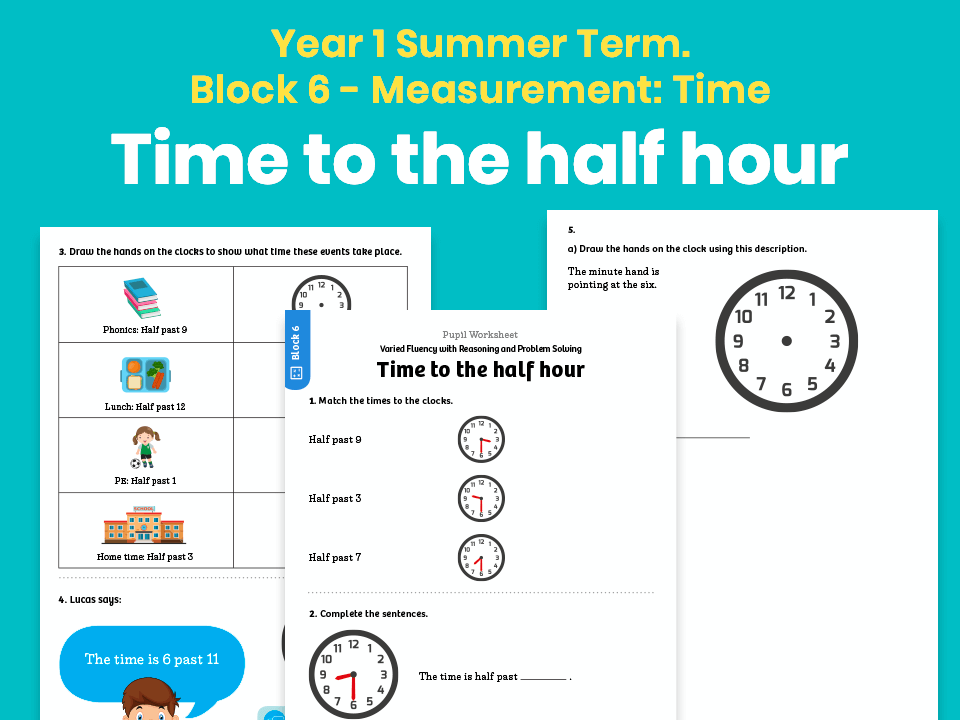
Naturally, this resource follows on by looking at time to the half hour.
Children use the knowledge they gained in the last step to correctly draw hands on clocks, check common misconceptions and match times to clockfaces.
Writing time
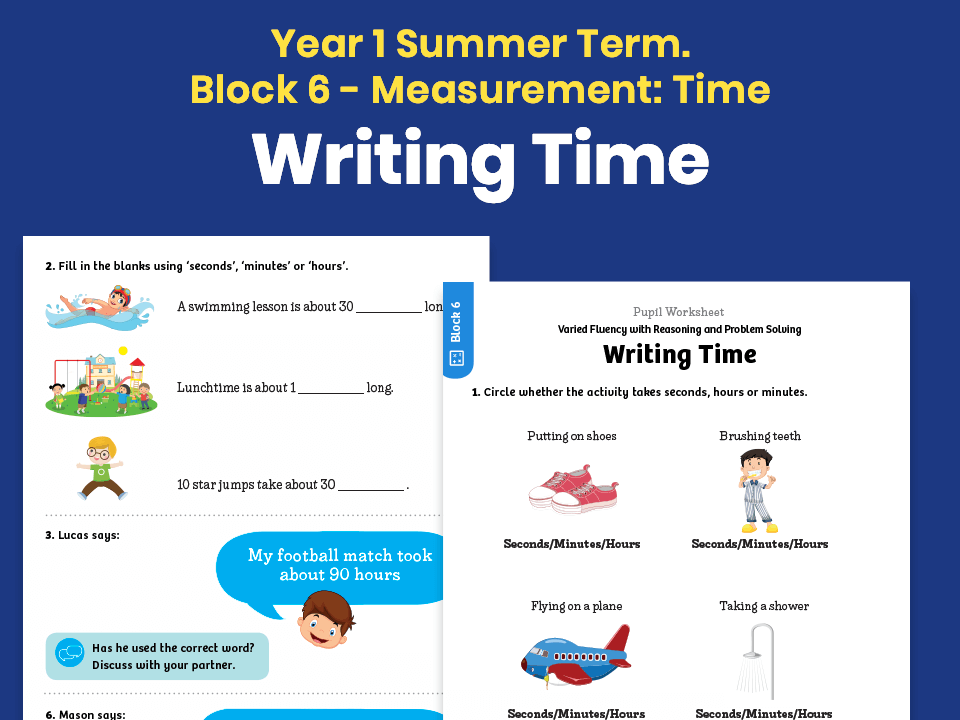
Here, children will explore the difference between seconds, minutes and hours by looking at different activities, learning to write the time in a suitable measure.
Problems are based around working out whether various activities take minutes, hours or days, and looking at common misconceptions.
Comparing time
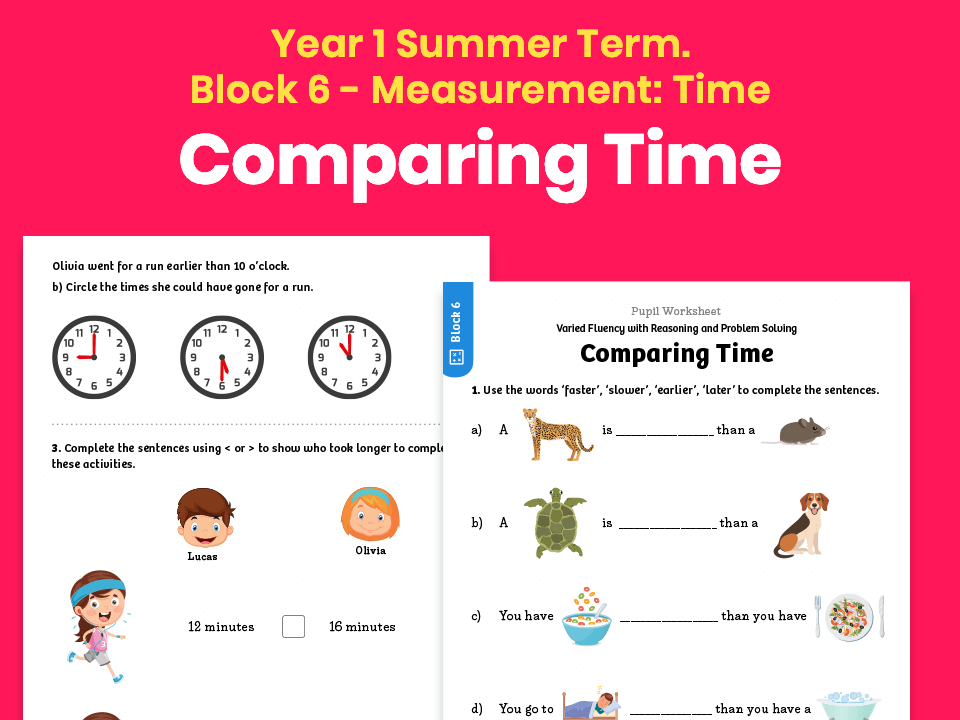
And finally, children will compare time using words like ‘faster’, ‘slower’, ‘earlier’, ‘later’ while applying their knowledge of writing and measuring time.
Pictorial questions show things like a bowl of cereal and a hot meal on a plate, and pupils need to fill in whether they have one before or after the other, or one shows a cheetah and a mouse, and pupils need to write if the former is faster or slower than the latter.
If you were interested in getting all six of these resources they’re priced at £2 each, so for £14.99 it might be a better idea to just get the complete Year 1 Summer Term Bumper Pack which includes them and five more blocks, so you get 29 worksheets in total.
Or just get this resource here.
Hickory Dickory Clock
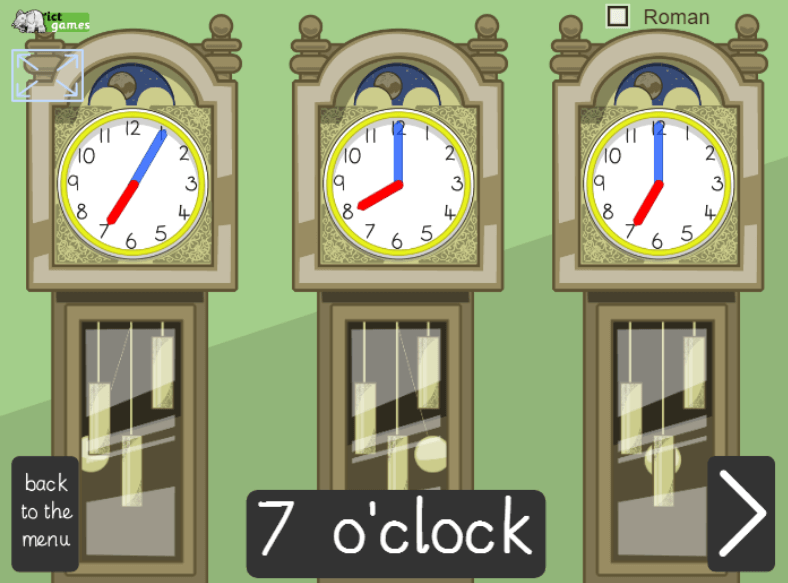
This simple Flash Player game shows three grandfather clocks as multiple choice answers for children to match with the given time.
Correct answers see the mouse run up the clock to collect some cheese.
Stop the Clock
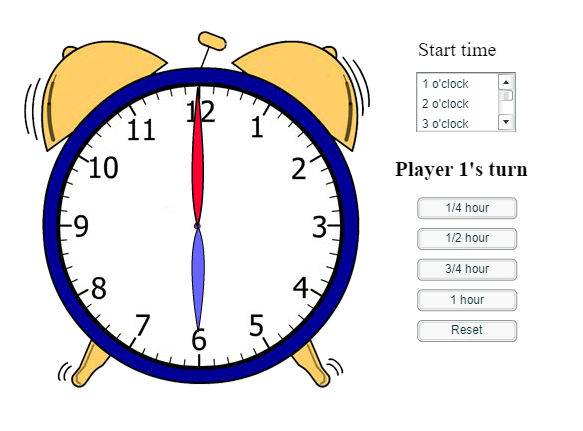
In this two-player NRich game the clock is set to 6 o’clock, and each child takes their turn to move the time on by a quarter of an hour, half an hour, three quarters of an hour or an hour.
The winner is the player who moves the hands exactly onto 12 o’clock. Can children work out a winning strategy so that they can always beat their opponent?
Telling the time game and worksheets
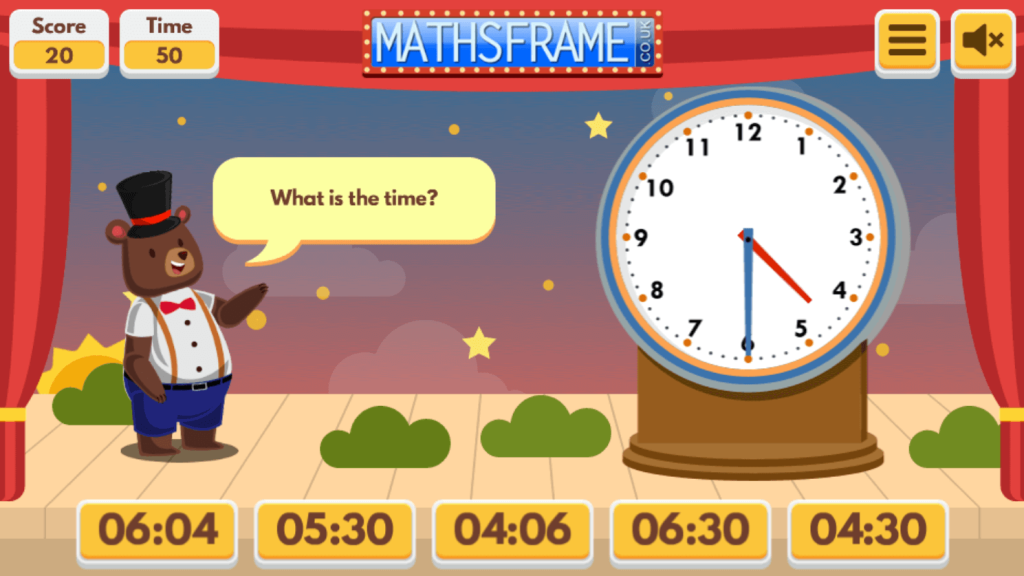
This MathsFrame game asks children to Read the time on an analogue clock, with lots of choice over levels, including: reading time to the nearest hour, half hour, quarter hour, five minutes or minute.
Plus, you can also try using a 24-hour clock, and seeing how many correct answers you can get in a given time.
And on top of that there is even a selection of worksheets covering things like time word problems and converting between different units of time.
How to teach telling the time
This Third Space Learning blog explains how telling the time in KS1 and 2 can be made easy, with a fail-safe step-by-step technique for teaching it from an experienced headteacher.
Plus, there are free worksheets to download along with it.
Browse more maths games KS1 ideas.




